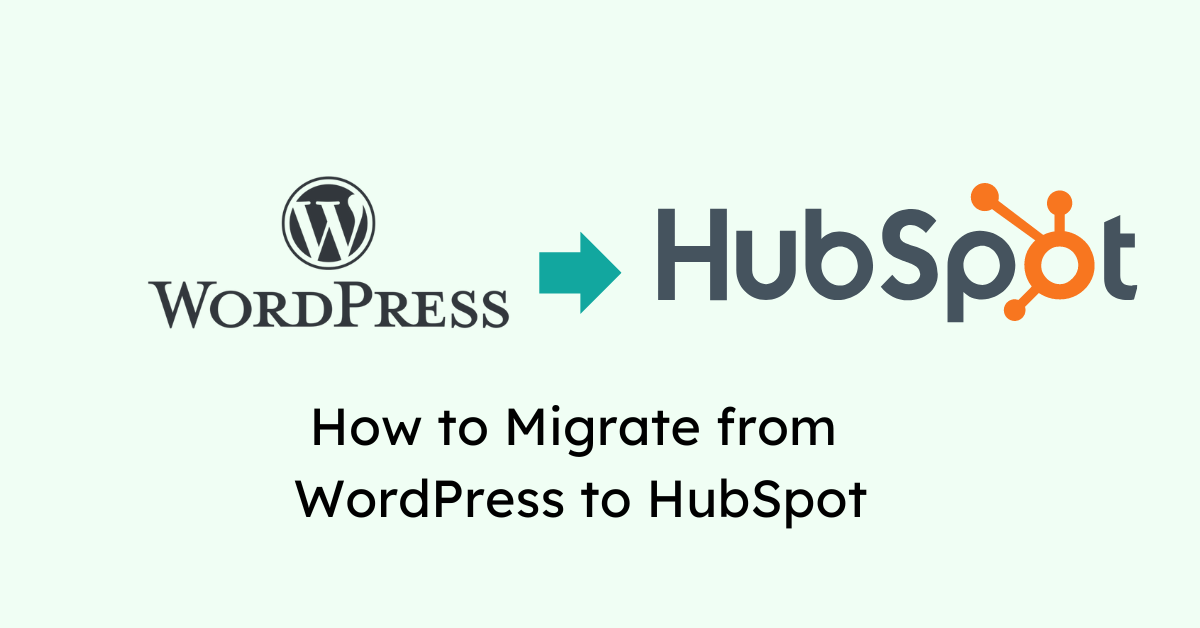
How to Migrate from WordPress to HubSpot

Migrating from WordPress to HubSpot is a path that many companies worldwide are following. While the first seems like a jack of all trades thanks to its many plugins, the latter offers a nearly undefeatable set of out of the box tools that can be very powerful if leveraged correctly.
What Are the Reasons for Migrating to HubSpot?
One of the primary reasons to migrate from WordPress to HubSpot is related to reporting. Incorporating a CRM into your WordPress website is possible, but more is needed to report your metrics to your CRM. It doesn't stop there; this will scatter your data, and you will have reports on different platforms, which will most likely translate into inaccurate data usage due to duplicates, old pulls of information being used for current reporting efforts, etc.
On the other hand, HubSpot offers reporting solutions within the platform itself. There's a library of reports available that HubSpot will create for you automatically when selected, but you can also build your reports on deals, contacts, tickets, and even users!
In addition, going back to WordPress's many plugins, there's a matter of cost that will save your company a lot of money in the long run. WordPress has +100 plugins that can be installed and used in various ways. However, more often than not, these plugins have a lot of associated costs related to installation and maintenance.
If your company decides to move to HubSpot, it will have access to an extensive catalog of integration options. These options are mostly free, automatically updated, and require less expertise to handle than WordPress ones.
So, How Do You Do It?
There are a few steps you have to follow to successfully move from WordPress to HubSpot.
Audit Your Website
Make sure that every page is considered, no matter how old it is or it’s current status (active/inactive). Think of it: There might be pages you haven’t looked at in a while, but they still generate leads for your business. Overlooking them just because no one has updated them in a while would silently damage your performance after completing the migration.
Avoid 404s
Migrating your website from WordPress to HubSpot means also migrating the server where your website is hosted. Therefore, if you don’t consider the redirects you have set on your website previously, you will end up with many people viewing a 404 error screen.
To avoid this scenario, import your redirects into HubSpot when migrating your website. You can do so by navigating to your HubSpot Instance’s settings, Tools, and Domains & URLs.

Keep an Eye on Security
In HubSpot, you can stage your website by navigating to Domains & URLs, then to Domains, and click on Connect Domain. After you have successfully connected your domain, you will be able to edit it and preconfigure settings like your SSL certificates.

Don’t Forget About Your Blog!
HubSpot has a built-in feature allowing you to import your blog seamlessly from WordPress directly. Unlike other never-ending, time-consuming migrations you have probably done in the past or heard about, migrating your blog to HubSpot can be done in just a few clicks.
If you navigate to your instance’s settings, then to Content and Blog, under the current view, you will find the option to either create a new blog or import a previously existing one. Just follow the steps, and you will successfully migrate your blog in no time!

Automations & Lead Capturing
While you can connect your WordPress forms to HubSpot, it’s better to recreate them along with all the necessary workflows, emails, and notifications you are currently using in WordPress to communicate with your leads and with your team as well.
You must recreate and test these assets before you launch your newly migrated website. Otherwise, you will lose leads.
The Last Step: Switching Your DNS
This is the moment of truth in your migration. After you connect your domain to HubSpot and have access to edit it, you will be able to change the website’s DNS settings. Don’t panic! The process of switching can take a few hours until completed, and in those hours, your website will be down for all visitors, but it will return to normal.
What’s Next?
One key argument for moving from WordPress to HubSpot is that it will generate a better ROI for your business. Even though switching platforms isn’t cheap, some HubSpot tools are free, and the price charged for using the platform will be determined by various factors.
On the other hand, using WordPress translates into more costs over time in hosting and security retainers. Switching to HubSpot will give you more money, and you can use it on different efforts that will help your company grow.
Are You Ready to Get Started?
Migrations can quickly go sideways if professionals do not carry them out. Some obstacles might pop up in the middle of the process that require expertise to solve, and the stakes are high.
So, leaving migrations in the hands of professionals like the ones making up the team at S.R. Professional Marketing is the best possible course of action. Let us take the wheel of your migration project and ensure everything runs smoothly in your new HubSpot instance. Contact us today!
